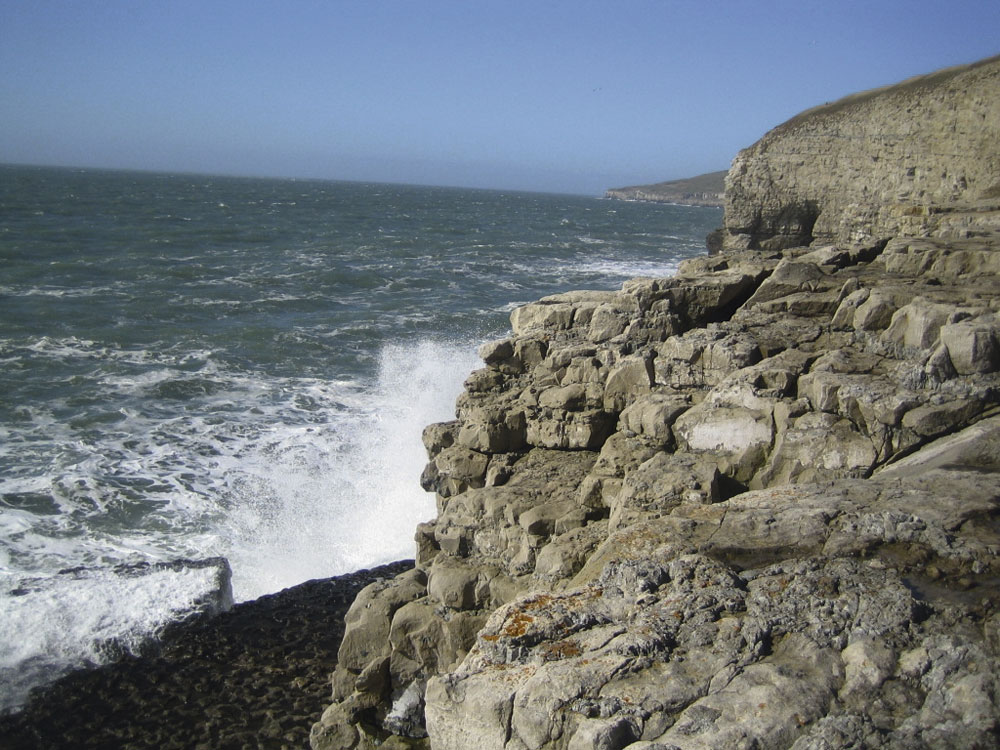California Quarry Extension

How planning permission was won in a very environmentally sensitive location
The Isle of Purbeck on Dorset’s coast may be familiar to many as a holiday destination, with its sandy beaches at Studland and Swanage, dramatic cliffs running to Lulworth, and Corfe Castle protecting the main route from Wareham. It is also the source of Purbeck stone (not to be confused with Portland stone), a durable bedded limestone of Upper Jurassic/Lower Cretaceous age containing fossils and, in places, dinosaur footprints. The various beds have local names, such as ‘grub’, ‘roach’ and ‘marble’, and different properties making them suitable for many uses in building, landscaping and decorative masonry.
Evidence of quarrying dates back at least to Roman times, with uses ranging from millstones to sarcophagi and general building stone to elaborate ornamentation and mouldings. Production has continued over the intervening period with fluctuating levels of intensity from the area around Corfe Castle to the sea cliffs at Dancing Ledge. Extraction even moved underground during the eighteenth century.
Quarrying today is limited to a handful of sites running in a line from Swanage to Langton Matravers and Acton, parallel to the coastal cliffs and a mile or less from the sea. The eastern most site is California Quarry, operated by Suttle Stone Quarries, a long-established local firm producing a wide range of products including sawn and riven flags, setts and paving, and random and dressed walling. Demand for building stone continues to come from the local area, but high-grade cut and polished stone can also be seen on the floor of the British Library and in other landmark buildings both in the UK and overseas, while flags, kerbs and setts adorn many town centres. Stone is also provided for the restoration of ecclesiastical and historic buildings where specific beds may be excavated to provide as close a match as possible to original masonry.
California Quarry lies in a highly environmentally sensitive area. It is within the Dorset AONB and the Purbeck Heritage Coast. The coastline itself is the Jurassic Coast, designated as a World Heritage Site. The coastal calcareous grasslands are a Special Area of Conservation (SAC) and an SSSI. The South West Coast Path passes along the top of the sea cliffs and there are numerous other footpaths and rights of way in the area, some passing along the quarry boundaries. Durlston Country Park and the Townsend Nature Reserve are close by, and much of the other land in the area is owned by the National Trust. Within the existing quarry, a planning condition requires the retention of an exposed face for geological study.
The landscape is described in the Dorset County ‘Landscape Assessment’ as ‘exposed sloping limestone plateau, windswept landscape with virtually no trees, geometric fields divided by a network of stone walls and sparse hedgerows, a landscape littered with small stone quarries, extensive open views towards the sea’. The Dorset Minerals and Waste Local Plan (adopted 1999) recognizes the quarrying of Purbeck stone as a long-established traditional industry meeting local, national and international demand, and that ‘continued support of the quarrying of Purbeck stone should be a key theme of the strategy’. The plan identified land to the west of the existing excavation as a ‘preferred area’ for an extension to California Quarry, with any working required to meet onerous criteria concerning the scale, intensity and environmental impact of future operations.
Following pre-application discussions on ecology, landscape, archaeology and minerals planning, a planning application prepared by White Young Green for a significant extension to the extraction area was submitted in April 2005. It included a landscape and visual assessment prepared by the Environs Partnership of Dorchester. In a first (for this writer anyway!), the application did not generate a typical volume of objection and fell to be determined under powers delegated to planning officers. Permission was granted in July 2005 subject to 27 conditions, giving the quarry a further 15 years life. Pre-commencement conditions required the submission of various schemes to mitigate environmental impacts, including noise monitoring, archaeological investigation and footpath protection. Soil stripping commenced under an archaeological watching brief in September 2005 and full production from the extension area will be achieved this year. Stone will be extracted by excavator and transported to the stock yard and cutting sheds by dumptruck, crossing an intervening footpath. Soil stripping, overburden removal, stone extraction and restoration to pasture at a lower level will continue progressively in phases westwards across the extension area.
The experiences at California Quarry show that it is still possible for mineral extraction to continue in very sensitive environmental settings given a unique need, supportive mineral planning policies, due containment and mitigation of environmental impacts, an appropriate scale and intensity of operation, and a track record of responsible and sympathetic quarry management.
White Young Green, Empress House, 12 Empress Road, Lyndhurst, Hants SO43 7AE; tel: (023) 8028 3226; fax: (023) 8028 2623; email: enviro.lyndhurst@wyg.com


